Hello! This is Nikki, Lead Veterinary Technician with Posh Dog Knee Braces. Today let’s go over how to break-in a new Posh Custom Dog Brace. First, we want to take things nice and slow. You wouldn’t take a brand new pair of boots to Disneyland resort for 10 miles of walking each day I hope. Neither should we put a custom brace on a dog for 8-12 hours without first working into that time. Just like in people, a dog’s skin needs some time to get adjusted to wearing something.
Over the next few weeks, as we gradually increase the times we have them in the brace, the skin will start to thicken and get stronger. Just like our feet do with a new pair of shoes. After a few short weeks, they should be able to tolerate wearing the brace longer and longer.

In the first 1-2 weeks, we suggest only using the brace during short leashed walks. This is to get your dog used to walking in the brace, to prevent soreness, and to get their skin used to having something touching. It can take a patient sometimes up to 3-4 weeks for the soreness in the muscle to get better, just like if we did physical therapy.
You wouldn’t want to run a 10K marathon with no practice or training, right? Even if your dog was walking 4+ miles each day before the injury, we now have atrophy and muscle loss (yes even if its only been a few weeks). Starting out with nice slow walks, and building up the times slowly, will really help prevent soreness and rubbing issues.
We typically don’t see rubbing sores with Posh, because we are so clear on our direction to our clients. Wearing the brace gradually more and more each week, really helps them adapt to having something touching their sensitive areas. The upper groin and ankle area seem to be the most common areas we see any irritation, and usually if the brace was worn for too long too fast. Doing 10-15 minutes twice daily for 2 weeks, then adding 15 minutes weekly to their walk schedule will really help.
We have this break-in schedule completely broken down for our clients in the handouts we send after the brace has been fit properly with a technician. A custom brace should never be worn right off without some sort of consultation, to ensure proper fit and make sure your dog is using the brace properly. Any company that does not do this is a red flag in my book.
Let me know if you have any questions about our break-in schedule! Please contact us via our contact page or visit our Facebook Page.
Nikki, Posh Lead Veterinary Technician
Holistic treatment for your dog’s injuries involves considering the overall well-being of the animal, addressing physical, emotional, and environmental factors. Always consult with a holistic veterinarian before implementing holistic approaches to ensure they are safe and suitable for your dog’s specific condition. Here are some holistic strategies for treating your dog’s injuries:
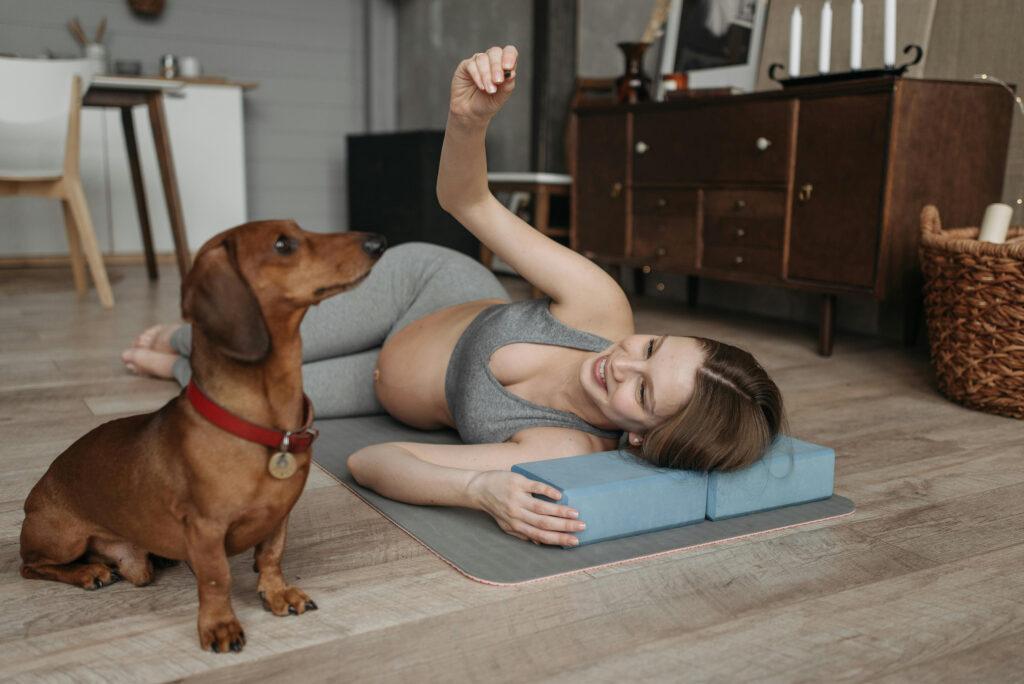
Remember that holistic approaches should complement, not replace, conventional veterinary care. It’s important to work closely with a veterinarian who has experience in holistic or integrative medicine to create a comprehensive and safe treatment plan tailored to your dog’s specific needs.
If you are interested in one of our Posh Dog Braces you contact us via our contact page or visit our Facebook Page for more information.
Reiki is a form of alternative therapy that originated in Japan and is based on the concept of channeling healing energy through the practitioner’s hands. While scientific evidence supporting the effectiveness of Reiki is limited, some dog owners and practitioners believe that it can provide various benefits for dogs. It’s essential to note that Reiki should not replace conventional veterinary care but can be used as a complementary approach.
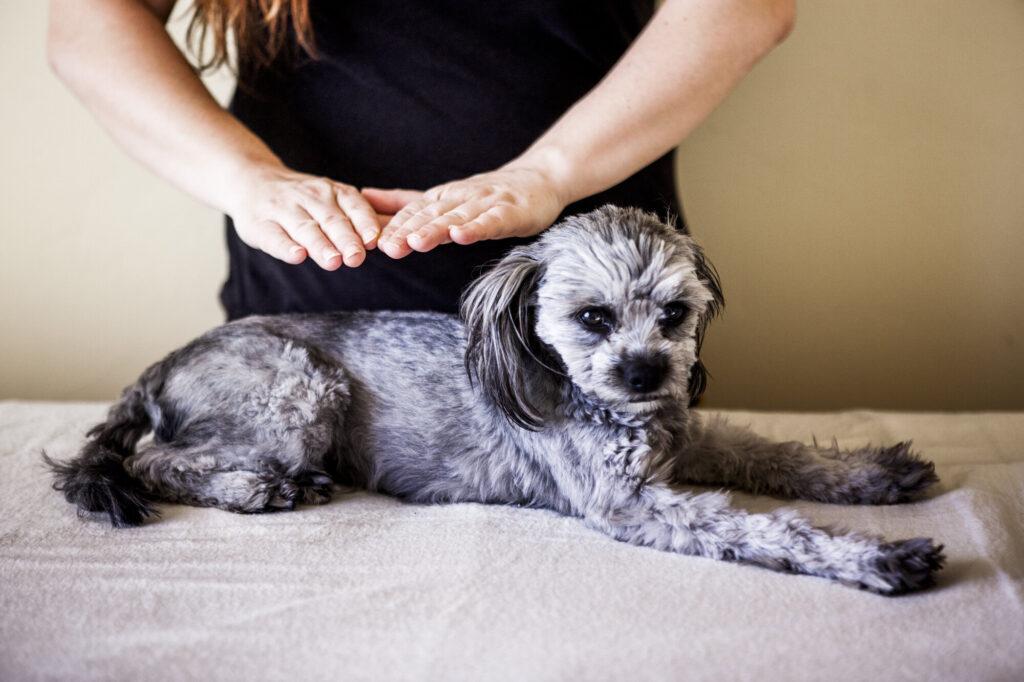
While some dog owners report positive experiences with Reiki, it’s important to approach it with an open mind and consult with a veterinarian before incorporating it into your dog’s care plan. Always prioritize conventional veterinary care for diagnosing and treating medical conditions.
For more information on how to help your dog recover with their injuries or if you are interested in a Posh Dog Knee Brace you can contact us via our contact page or visit us on Facebook.
Managing your dog’s osteoarthritis through complementary therapies can help improve their quality of life and provide additional support alongside traditional veterinary treatments. Always consult with your veterinarian before implementing any complementary therapies to ensure they are appropriate for your dog’s specific condition. Here are some complementary therapies that can be beneficial for dogs with osteoarthritis:
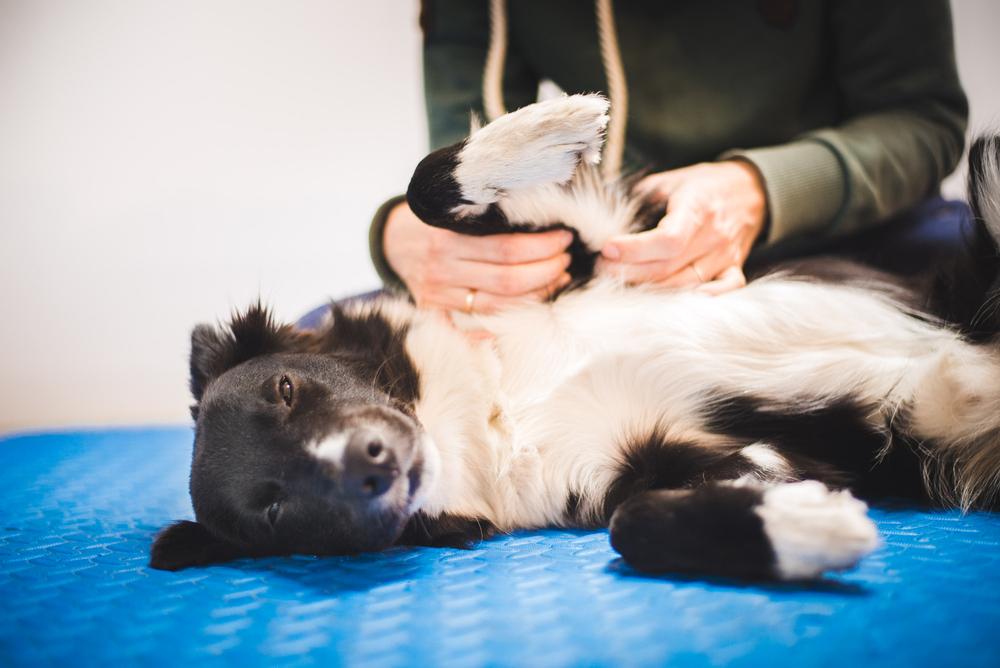
Remember that complementary therapies should complement traditional veterinary care, not replace it. Always discuss any new treatments with your veterinarian, as they can provide guidance and ensure that the chosen therapies are safe and appropriate for your dog’s specific needs. A multimodal approach that combines traditional veterinary treatments with complementary therapies can have a positive impact on managing your dog’s osteoarthritis and enhancing their well-being.
If you would like more information on our Posh Dog Knee Brace you can contact us via our contact form or visit our Facebook Page.
Today I would like to talk about recommended activity levels with a brace or CCL tear. It is still important to remember that this is not a race. Recovery from a CCL takes time, which is why we use a gradual increase in activities.
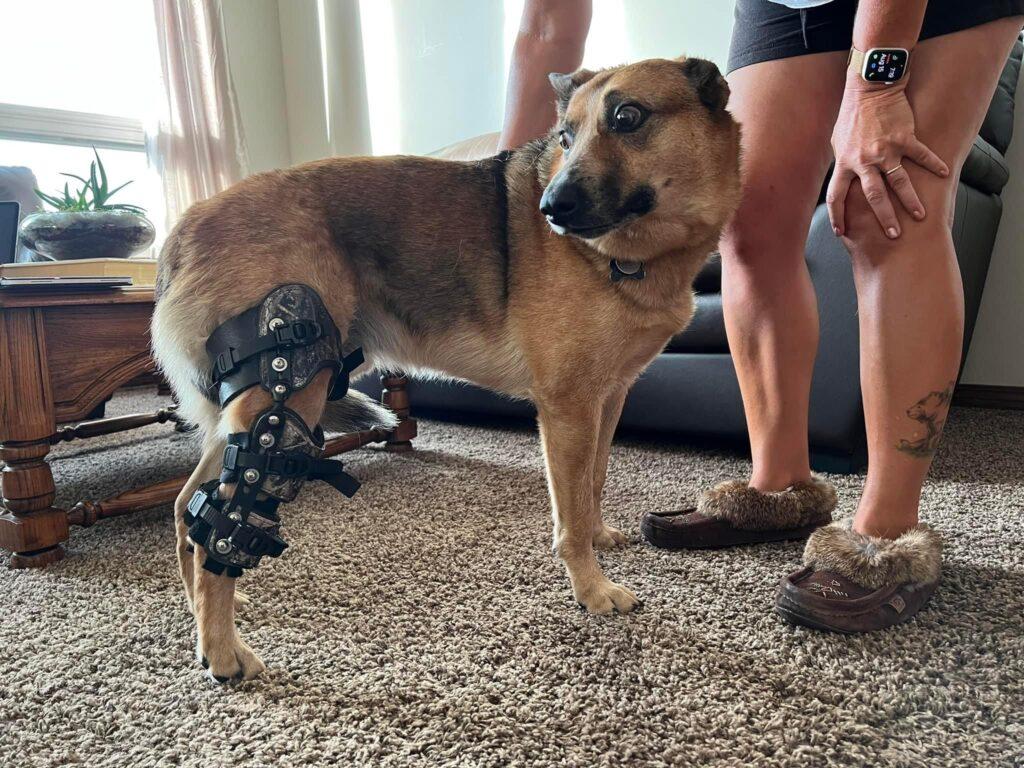
Initially, we start with walks and light physical therapy and massage. Gradually, we can increase activities, such as adding hills or inclines to the walk, sit stands, more muscle building activities.
It is not recommended to let your dog run off leash while in recovery. This can lead to injury of the other leg potentially. Braced walks are meant to be nice and slow, not a jog. The goal is to have your dog placing full weight down on his leg. If you walk or run too fast, they will skip and not place full weight on the leg.
We will get to a point where your pup can play off leash, but ask first, and take things slow. Feel free to email or send in a contact request with any questions, we are happy to help!
Give Your Dog a Big Hug From Us!
Nikki, Posh Lead Veterinary Technician
Looking for more information about our Posh Dog Knee Brace contact us via our contact form or visit our Facebook Page.
For dogs to maintain their physical and mental health, regular dog exercise is crucial. To avoid injuries, it’s important to select workouts that are suitable for your dog’s age, breed, size, and degree of fitness. The following canine workouts and injury prevention advice:
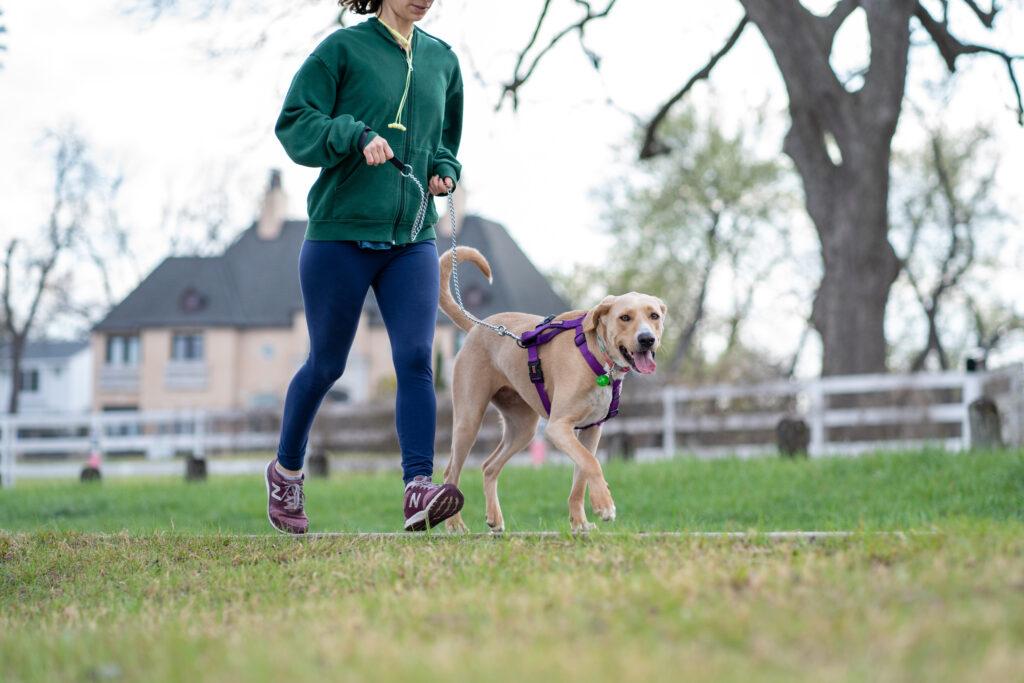
If you are interested in more information you can contact us via our contact page or visit our Facebook page.
Rehabilitation therapy, also known as physical therapy or physiotherapy for dogs, offers a wide range of benefits that can significantly improve their overall health, mobility, and quality of life. It is especially beneficial for dogs recovering from injuries, surgeries, or managing chronic conditions.
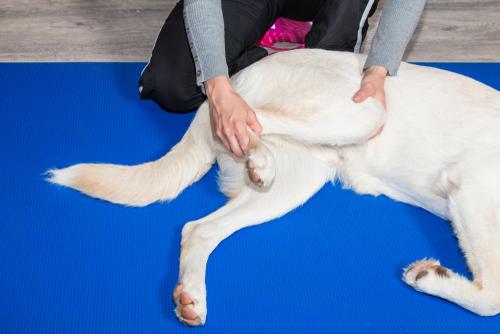
Rehabilitation therapy for dogs is typically provided by licensed veterinary professionals, such as certified canine rehabilitation therapists (CCRT) or veterinarians with specialized training in physical therapy. If you believe your dog could benefit from rehabilitation therapy, consult with your veterinarian to discuss the best options for your dog’s specific condition and needs.
If you are interested in a Posh Dog Knee Brace visit our store page to purchase and if you need more information or would like to keep up to date on new things with Posh Dog Knee Brace visit our Facebook page.
Hey guys, Nikki with posh dog knee braces here. So, first of all I can’t stress enough the need to do some form of physical therapy. We send every patient home with a 12 week recovery calendar and exercises, however, we need you to keep those up for the full 9 months. Whether you find a holistic or physical therapy clinic to help you with water treadmill or PT, you need to keep you dog active in some way.
Lack of activity will cause a joint to “lock up” after the scar tissue has formed, meaning there is not going to be the same amount of range of motion there. There also can be loss of muscle. The brace alone is not enough to build muscle, you will need to keep walking your dog, and doing some form of exercise program. This is needed whether you do surgery, Conservative management, or bracing. Doing nothing will result in loss of muscle, loss of range of motion, and most likely arthritis and pain down the road.
We have a lovely list of holistic veterinarians and rehab clinics around the US and in Canada, so reach out if you are struggling to find a clinic. The clinics on our list are partners with posh, and know how to treat our patients, as well as measure and fit the brace if needed. We do have some things we can have you do from home as well, if PT is just not in the budget. I am happy with walks, simple exercises, and passive range of motion.
What is PROM? This is you gently bending and flexing the knee, as well as the hip. I have videos we send to you on how to do this stretching, but this is key to keep flexibility in the joint, and not end up with lack of movement there.
Please let us know if you have any questions, poshdogkneebrace.com or visit our Facebook Page. Thanks!
Lasserriffic has what you need! Use coupon code “POSHDOG” to receive $500 off the price of laser therapy.
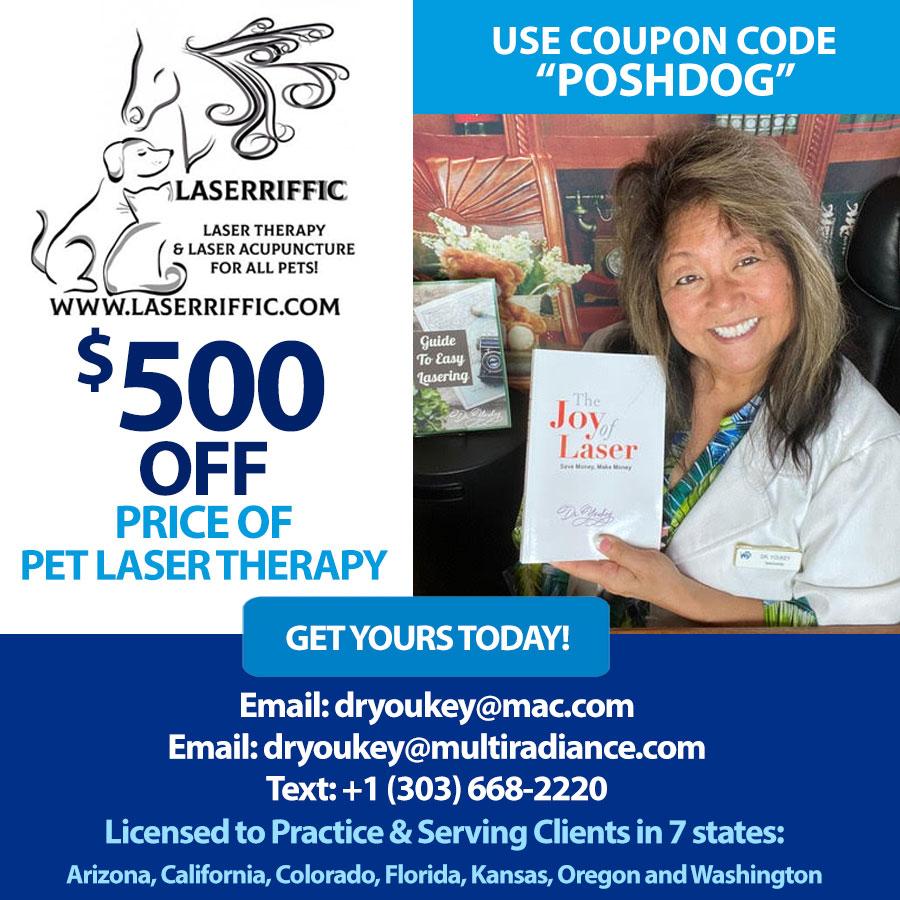
Dr Yukiko Kuwahara, (also known as Dr. Youkey) received her Doctorate in Veterinary Medicine from Colorado State University. She has a vast 45 years of experience in the pet industry including a Hospital Administrator of a busy 24 Hour Emergency & Referral hospital, President of a pet toy manufacturing firm, operating a humane animal breeding facility providing pets for the pet stores, starting a non-profit charity to help the pets of the homeless, and a radio talk show host of the “The Wild & Wacky World of Pets & Animals” on two syndicated radio stations.
She has also been an On-Set-Vet ensuring that the animals used on movie sets & commercial shoots are not harmed but treated humanely. Currently, she is a mobile laser acupuncturist helping patients in 7 states. She also sells over 33 lasers from 13 companies and distributes many other select veterinary equipment.
She continues to lecture worldwide teaching other vets how to select their lasers and to use them properly. She has authored 4 books and created an app that helps to use their laser to its optimum level. If you catch her at one of her live lectures, she will entertain you & you won’t be bored when you sit in one of her joyous lectures. She enjoys WATCHING others hike while she participates in the more relaxing world of books and movies.
If you have any questions you can contact us through or contact page or visit our Facebook Page.
Any number of ailments might result in a dog’s hind-legs losing strength. The following hints will help your veterinarian identify the problem’s root cause.
Regardless of the source, a dog’s weakness normally manifests itself first in the hind limbs. This seems obvious given how much work the dog’s hind-legs perform. They are in charge of pushing the body upward from a seated or lying position as well as driving the body forward when moving. You will be made aware of a weakness-related issue if you experience difficulty with these routine daily tasks.
What does a weak set of back legs on your dog look like? Hind-limb weakness is indicated by a variety of behaviors, including slow rising, sinking on the back limbs, dragging the tops of the toes, swaying of the hind end, occasionally crossing of the limbs, intolerance to physical exertion, slipping, sliding, and collapse of the hind end. The ability to stand on its hind-legs may also suddenly disappear in your dog.
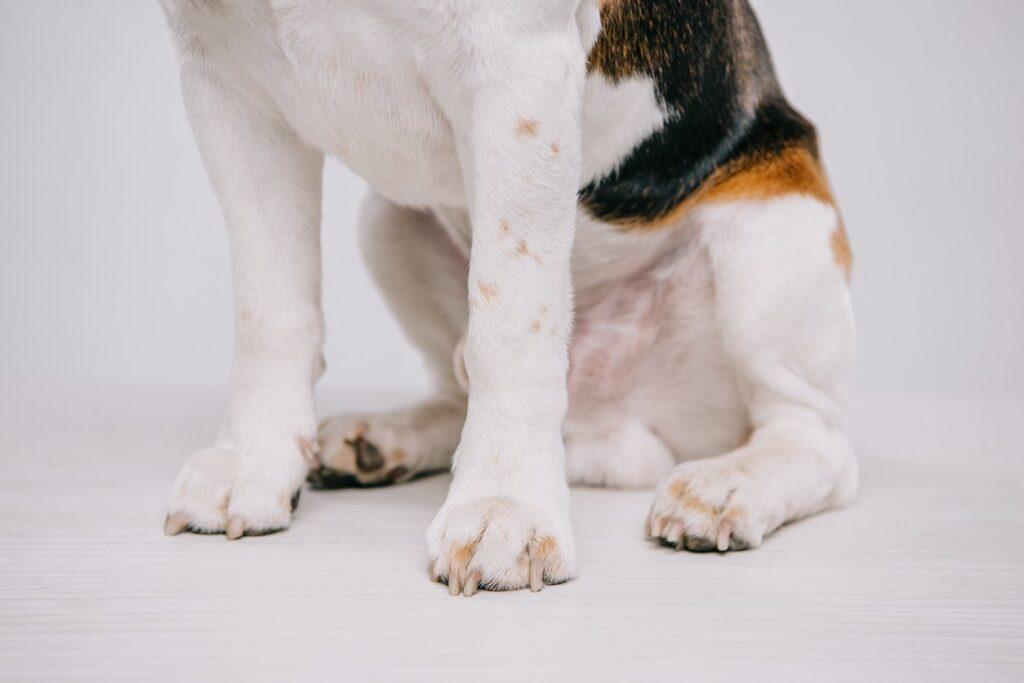
If your dog exhibits any of these symptoms, you should pay attention to a few details that can aid your vet in identifying the problem:
Some problems are more likely than others depending on your dog’s age and size. This is applied to the diagnostic procedure as well.
The four primary categories of causes of hind-leg weakness are orthopedic, neurologic, metabolic, and cardiac.
Chronic joint inflammation/pain is the primary orthopedic cause of canine hind-leg paralysis (osteoarthritis, degenerative joint disease). Although arthritis is obviously painful, it is frequently accompanied by compensatory pains, which are muscle aches and pains. The dog finds it difficult to stand up and move as a result. He might become more sedentary as a result, which would worsen the condition by causing him to lose muscle mass and fitness.
Due to the wear and tear on the joints over time, arthritis most frequently affects older dogs; overweight dogs endure an additional burden because of the increased tension those extra pounds place on the joints. Hip arthritis may appear in puppies of dogs with hip dysplasia, which results in improperly shaped hip joints. These arthritic disorders typically present with a delayed, sneaky onset of hind-leg weakening. It won’t appear to have occurred overnight.
Immune-mediated arthritis and Lyme arthritis are two acute types of arthritis that can cause a dog’s hind end to suddenly weaken. In addition to fractures and intervertebral disc disease (IVDD), overweight dogs frequently suffer from bilateral anterior cruciate ligament (ACL) tears, which are additional orthopedic reasons of hind-leg paralysis. Your veterinarian will be able to identify these diseases and recommend the proper treatment with the use of blood tests and x-rays.
IVDD: When an unhealthy disc (or discs) puts strain on the spinal cord and causes neurologic weakness, IVDD transitions from an orthopedic problem to a neurologic one. The majority of these instances are treatable medically, but surgery is necessary if paralysis develops or medical treatment is ineffective.
Spinal tumors: Similar symptoms are brought on by neurologic disorders such as spinal tumors. For a diagnosis, sophisticated imaging techniques like computed tomography (CT) or magnetic resonance imaging (MRI), as well as occasionally cerebrospinal fluid examination, are needed.
Diskospondylitis: An infection of the intervertebral disc and the ends of the surrounding vertebrae is known as diskospondylitis. It can be challenging to diagnose, produces hind-limb paralysis regularly, and is excruciatingly painful. Long-term antibiotic use is the course of treatment (six to 12 months). Your dog may need more x-rays and/or more sophisticated testing, such as CT or MRI, to make a certain diagnosis because this ailment can be challenging to diagnose in its early stages. These canines can fully recover if they are diagnosed and treated appropriately.
Lumbosacral stenosis: Cauda equina syndrome, or lumbrosacral stenosis, is a degenerative disorder that affects only the lumbosacral joint and is related to IVDD. This joint joins the last vertebra to the pelvic region. It differs from the other intervertebral joints in that the spinal cord sends all of the peripheral nerves that travel to the hind end to this joint. In addition to being extremely painful, this type of disease typically results in neurologic impairments and weak hind limbs.
Degenerative myelopathy: Weakness in the hind-legs is a symptom of degenerative myelopathy (DM), a slow but progressive deterioration of the spinal cord. Although it affects various breeds, the German Shepherd Dog serves as the disease’s mascot. Typically, older and middle-aged canines are affected. There is just supportive care available as a treatment for DM right now.
Myasthenia gravis: An autoimmune neuromuscular condition called myasthenia gravis (MG) causes muscle weakness that worsens with exertion. It may begin with weakness in the back limbs but quickly progresses to total body weakness and collapse.
Here’s a situation that is typical of Myasthenia gravis: Your dog wakes up after a nap and acts normally. As soon as you start walking, he begins to sink, slip, and stumble until he is unable to stand or walk. He can resume short-term function after a period of rest that enables the replacement of damaged neuromuscular transmitters. A blood test is required for diagnosis. Long-term therapy is required (six months or longer). Some canines will have remission and resume their regular lives. Others will require care and support throughout their lives.
Exercise-induced collapse: Labrador Retrievers and a few other breeds are susceptible to the genetic illness known as exercise-induced collapse (EIC). It usually manifests itself between the ages of 6 months and 2 years. It takes place following several minutes of intense exercise. The dog quickly starts to weaken and lose coordination in his hind limbs, eventually collapsing. For this, there is no cure. Avoiding vigorous exercise is one method of prevention. It is crucial that you get your puppy from a breeder who has tested the parents for this gene for the aforementioned reasons. Have your adoptive dog’s EIC gene checked if he exhibits these symptoms.
Idiopathic vestibular syndrome: In elderly dogs, idiopathic vestibular dysfunction is a frequent cause of weakness in the rear limbs and lack of coordination. It appears abruptly and may give you the impression that your dog is having a stroke. This disorder’s origin is uncertain. It typically comes with a head tilt and balance problems. With supportive care, the majority of dogs will recover in time.
Numerous illnesses transmitted by ticks can result in generalized neuromuscular weakness, which may first show in the rear limbs. If you notice ticks on your dog, let your vet know.
Hypoglycemia (low blood sugar), anemia (few red blood cells), and hypokalemia (low potassium) are a few examples of metabolic conditions that might weaken the hind-legs. Blood testing can quickly diagnose this. For these problems to be solved, identifying their underlying causes, which necessitates more diagnostic testing, is crucial.
Weakness can result from endocrine conditions such as insufficient thyroid hormone (hypothyroidism) and underactive adrenal glands (Addison’s disease). Blood tests are used to diagnose both conditions, and there is no cure.
Hepatic encephalopathy, a metabolic disorder that causes sporadic weakness and confusion and is most noticeable after eating, can be brought on by certain liver disorders.
All of the body’s tissues must receive sufficient blood flow and oxygen, which depends on healthy heart function. Weakness happens when heart function is compromised, regardless of the underlying cause. Again, for the reasons already mentioned, weakness in dogs typically manifests itself in the hind-legs first.
Heart illnesses that affect dogs include heartworm disease, congestive heart failure, heart muscle disease (cardiomyopathy), cardiac arrhythmias, cardiac or pericardial tumors, and fluid in the sac surrounding the heart (pericardial effusion).
Your veterinarian will discover a cardiac explanation for the hind-leg weakness you’ve noticed during your dog’s physical examination, and treatment and diagnosis will proceed from there.
As you can see, there are many different possible reasons why dogs’ hind limbs get weak. Because of this, it’s crucial to have your dog inspected if you notice this problem; never just brush it off as a “old dog” problem. Many of the underlying causes can be ruled out by your veterinarian, who can then hopefully provide a conclusive diagnosis. Even if your dog is quite old, diagnosing and treating some of these disorders can completely transform his life!
There is no cure for some chronic illnesses, such as osteoarthritis. However, there is a lot you can do to enhance and preserve your dog’s quality of life for a very, very long period. Your sensitive loving care and dedication to supportive measures are the first step.
Support for Mobility Issues Caused by Arthritis
If you are interested in more information about our Posh Dog Knee Brace you can contact us on our form or if you would like to purchase our brace you can click here, you can also join our Facebook Group page to hear how other dog parents help their dog with their pain management and therapies.
Dog Knee Recovery Without Surgery
By Rosemary Levesque, Licensed Spiritual Healer
Second Nature Healing®https://secondnaturehealing.com
Rosemary@secondnaturehealing.com or call directly 503-747-3307
The following article is written in gratitude to Posh Dog Knee Brace for their support during Gracie’s recovery from a torn CCL. Gracie wore the brace and healed well without surgery. In honor of Gracie who had a long healthy life, I’m offering:
The cranial cruciate ligament (CCL) in dogs is a band of connective tissue that connects the upper leg bone (thigh) to the two lower leg bones (tibia and fibula) at the knee joint – called the stifle in dogs. The CCL helps stabilize the stifle, and is highly vulnerable to tears which destabilize the joint. Damage to the knee joint is the leading cause of rear-leg lameness and the major cause of degenerative joint disease in dogs. (1)
If you can’t wait to get started with healing and recovery, please begin here.
My number ONE product source for healing and recovery is https://avinihealth.com/rosemary.
These products are designed with humans in mind, but with my years of experience working with animals, I know how critical it is to use these products, safely and easily, across the board, with all species. Call me for a consultation on how to help your dog heal faster, without surgery, using the Posh Dog Knee brace and my products.
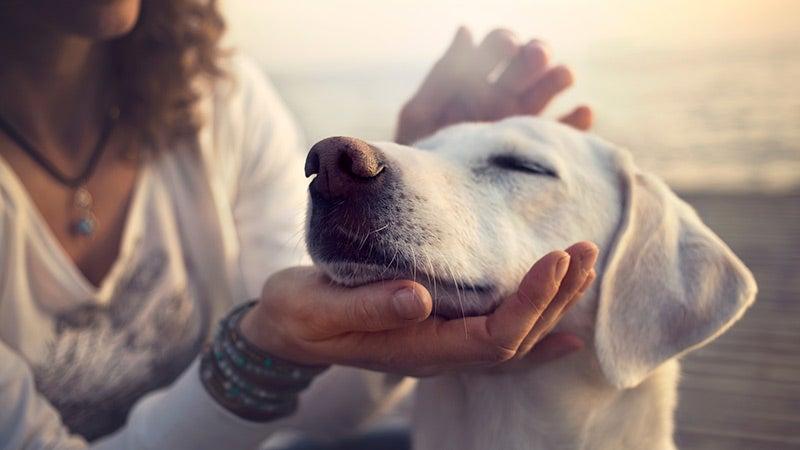
There are many situations that could result in a CCL tear:
Contributing factors like obesity, genetics, and general health may also have a role in causing a torn CCL. Since animals are excellent at hiding their injuries and illnesses, you’ll want to be especially observant if you suspect a tear. In addition to limping or lameness, watch for muscle atrophy in the thigh or imbalance in the spine.
When Gracie jumped into the car as usual one beautiful spring day after a pleasant walk in the park, she yelped in pain. Yet after her initial jolt, she seemed fine. She ate and walked normally for several weeks until we had our next vet visit, a yearly wellness check-up. Suddenly she picked up her hind leg, revealing her lameness. It surprised me that she’d wait until we were in his office to say something about her problem. She hadn’t shown me any sign of lameness since the incident a few weeks prior.
A veterinary examination for stifle injury usually includes manipulation of the joint and is called a “drawer test”. Physical manipulation of the joint forces the ligaments to stretch and tear more. Unfortunately, it was an issue and Gracie became obviously lame after that. That’s why I add this test to the list of causes. Even if a small tear already exists, it can worsen after such manipulation. If you suspect a torn CCL, do NOT allow your vet to perform the drawer test.
Our vet suggested that we see a specialist for CCL surgery. He also offered cold laser treatments at his clinic to help speed healing and recovery. I felt hopeful about Gracie’s healing and recovery with the healing methods I already know and use. So, in addition to frequent cold laser treatments, my plan included Reiki, essential oils, and acupuncture. I opted to not have invasive, expensive surgery.
The most common response to a torn CCL is to perform a surgery called Tibial Plateau Leveling Osteotomy (TPLO). In this surgery, the tibia, a lower leg bone, is cut (leveled) and rotated to change the direction of movement. A plate is added to secure the new location of the joint. Following weeks of immobility and pain management with medications the problem may be resolved. The cost of surgery and x-rays may range from $2500 to upwards of $6000.
However, cost isn’t the only issue to consider. Weeks of restrained immobility are not only depressing for your active animal, but difficult to control and have other effects such as weight gain, muscle atrophy, and risk of infection as well as the risks associated with the surgery itself. Pain medications can often have harmful side-effects. More importantly, studies now show a definite link between TPLO surgery and osteosarcoma (bone cancer) at the site of surgery.
“. . . dogs with a history of TPLO were 40 times as likely to develop proximal tibial osteosarcoma as were dogs with no history of TPLO. In addition, each 1-kg (2.2-lb) increase in body weight was associated with an 11% increase in the odds of proximal tibial osteosarcoma.” (2)
What’s really best for your dog? Is there another way?
Gracie did well with the holistic methods I used to support her healing. Most importantly, we were still able to walk her short distances while she gradually improved. We purchased a set of stairs for the car so she wouldn’t jump into the car anymore to risk further injury. We added specific supplements to support joint healing and repair.
All of it worked pretty well until one cold winter day when Gracie slipped on the ice. She reinjured her CCL and was in obvious pain. Back to the start once again, I panicked and scheduled an appointment with a surgeon for that week. Fortunately, my intuition told me to keep looking. That’s when I found the REAL ANSWER that saved Gracie’s knee and allowed her to heal – finally – without surgery.
I began searching for a knee brace for Gracie and discovered that they fall into several categories:
Of course, the custom fit seemed like the better way to go, and quality, durability, and customer service and support were also important. That’s when I finally found Posh Dog Knee Brace. (3) They provide a way to make a custom fit brace with highly durable materials that are waterproof (and beach-proof) and long-lasting with a superior guarantee. Their fast service provided us with a custom-fit brace for Gracie in just days.
Immediately on the first try-on, Gracie was able to take her first steps. We started using the brace for short walks until she regained her strength and balance. That’s when I noticed how much she had been compensating for her injury. She was finally able to walk straight without limping, and without any curve or adjustment in her spine. The thigh muscles which had atrophied began to get strong once again. We continued with natural healing techniques and tools which were much more effective now that Gracie had the support of her brace to stabilize the stifle.
There may be little difference in perceived success when comparing TPLO surgery to using an ordinary or inferior knee brace (one that doesn’t fit properly or doesn’t fully support the stifle joint). I believe the real differences come in the form of ease and comfort while healing as well as from the quality of the brace. Many of the sites I investigated, including articles from the American Veterinary Association, Veterinary Medicine websites, and holistic journals gave a more comprehensive picture. Surgeons at the School of Veterinary Medicine at the University of Pennsylvania don’t use TPLO surgery.
Dr. Amy Kapatkin, a board-certified orthopedic surgeon says, “Why break a bone to fix a ligament” (4)
It’s critical to support healing from every angle while the stifle joint is stabilized.
[1] https://www.petmd.com/dog/conditions/musculoskeletal/c_dg_cranial_cruciate_ligament
[2] Association of tibial plateau leveling osteotomy with proximal tibial osteosarcoma in dogs
Journal of the American Veterinary Medical Association
September 15, 2018, Vol. 253, No. 6, Pages 752-756
Laura E. SelmicBVetMed, MPH; Stewart D. Ryan BVSc, MS; Audrey Ruple DVM, PhD; William E. Pass DVM; Stephen J. Withrow DVM
Flint Animal Cancer Center, Department of Clinical Sciences, College of Veterinary Medicine and Biomedical Sciences, Colorado State University, Fort Collins, CO 80523. (Selmic, Ryan, Pass, Withrow); Department of Comparative Pathobiology, College of Veterinary Medicine, Purdue University, West Lafayette, IN 47907. (Ruple)
[3] https://www.secondnaturehealing.com/docs/Posh%20Flyer%20Gracie%20-%20SecondNatureHealing.pdf
[4] https://www.whole-dog-journal.com/issues/13_2/features/Dog-Surgery-Alternatives_16198-1.html
Today we will be talking about dog acupuncture. The treatment is effective, especially for canines with arthritis or neurological issues, whether the veterinary acupuncturist uses Traditional Chinese Medicine or Western medical acupuncture.
Dogs with osteoarthritis and some neurologic and musculoskeletal problems may get relief from pain through acupuncture, which also enhances their comfort and quality of life. It works best when combined with other techniques and modalities, such as analgesics (painkillers), laser treatment, massage, and physical therapy, as a complimentary therapy.
Around 100 BC, acupuncture emerged as a crucial tool utilized by practitioners of Traditional Chinese Medicine (TCM). The original TCM principles are still followed in its usage for human and veterinary medicine, as well as by others who find it useful for reasons other than those covered by TCM.
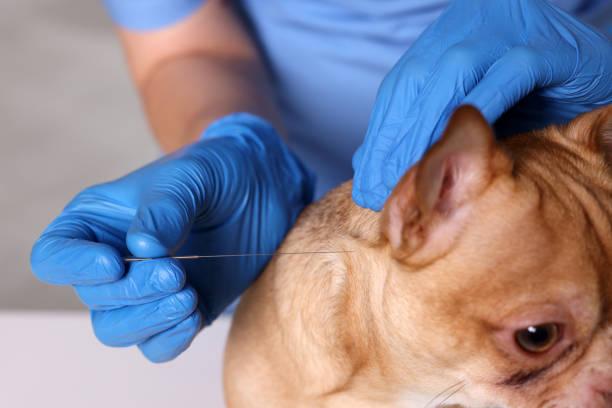
Traditional acupuncture is regarded as an alternative medical treatment since the rationales behind its application do not align with contemporary evidence-based medicine.
According to TCM, the life force energy known as Chi (occasionally spelt “qi,” but always pronounced “Chee”) permeates all of nature, including people and animals. A network of meridians or passageways is thought to be the body’s primary means of transport for chi. Meridians are invisible passageways through which the essential life force travels; they are not visible bodily features like blood vessels or neurons. Similar to people, dogs have named and mapped meridians, and each one has an effect on specific bodily systems and physiological processes.
Yang and Yin are the two polar opposites of Chi. A body that is balanced in both Yin and Yang is one that is healthy and harmonious. Consider the polarities on a battery’s ends. The positive terminal is on one end of the battery, and the negative terminal is on the other. Electricity travels from the positive terminal of a battery to the negative terminal when it is inserted into a device, such as the remote control for your television. Similar to the Yin and Yang in a healthy dog or human, the flow of electricity is steady and balanced.
According to TCM, a Yin/Yang imbalance is what causes disease and agony. A certain meridian may experience congestion, blockage, or stagnation in the flow of Chi. This could result in that meridian having more Yin and less Yang.
In order to stimulate specific spots (referred to as acupoints) along the blocked meridians and restore the equilibrium between Yin and Yang, acupuncture involves inserting very small needles into the skin. Acupuncturists study and memorize each acupoint’s name and function on the body’s 12 meridians in order to treat particular diseases and injuries as well as to promote health and ward off disease.
Dry needling, a technique used in traditional acupuncture, involves inserting very small needles into acupoints connected to certain medical disorders and leaving them there for 10 to 30 minutes. Dog Acupuncture in other forms includes:
When you take your dog to a veterinarian that uses traditional Western medicine, the doctor will inquire about your dog’s appetite, drinking habits, and level of energy. She’ll want to know what you feed your dog and whether or not her bowel movements are consistent with typical behavior. These inquiries will typically be made by the vet as she examines your dog physically, palpating her abdomen, feeling her heart and lungs, and peering into her eyes, ears, and mouth.
Some of the same questions will be asked by veterinary acupuncturists, but they may also add some that may sound strange to you. For instance, they might ask if your dog enjoys a soft or a hard bed to sleep in, and whether she loves to do so in warm or cool environments. Additionally, when they conduct a physical examination of your dog, they will perform procedures that traditional medical professionals do not, like feeling (rather than just counting) your dog’s pulse in several locations, particularly the femoral artery (inside each of the dog’s hind legs, close to the groin), and examining your dog’s tongue.
Veterinarian acupuncturists determine where your dog’s Chi is obstructed or stuck and which acupoints they need to stimulate to restore the healthy flow of Chi using the additional information about your dog’s health collected by these alternative diagnostics.
The acupuncturist typically places needles in six to thirty different places on your dog. As the treatment begins to take effect, dogs almost invariably become extremely calm, and many dogs fall asleep for the about 20 minutes that the needles are left in place.
Acupuncturists typically advise having the canine patient return for at least six or eight sessions of acupuncture, scheduled at least once or twice a week for a few weeks, and subsequently at longer intervals, even though favorable effects may be noticed as soon as the same or next day.
Studies on the effectiveness of the method have often produced conflicting results, and Western scientists have not discovered any evidence to support the presence of acupuncture points or energy meridians in the body. Nevertheless, there is sufficient anecdotal evidence to support its capacity to achieve better results in treated humans and animals that many practitioners use the modality without necessarily believing in the TCM beliefs that underlie the technique.
The phrase “Western Medical Acupuncture,” which is becoming more and more common nowadays, refers to the use of acupuncture in addition to traditional medical diagnoses and treatments.
Modern researchers have looked for alternate explanations for acupuncture’s success, arguing that acupoints and meridians may exist along important facets of the neuromuscular system even though they are not yet detectable with diagnostic methods in use today. Acupoints have been discovered to connect with muscle/tendon junctions, superficial nerve plexuses, and points where nerves enter muscles. Additionally, the meridians on TCM maps, or the channels through which Chi flows, frequently follow the same routes as peripheral nerves.
But there is enough proof that when acupoints are stimulated, the body reacts in measurable ways. Endorphins and endogenous opioids are released, which may have analgesic (pain-relieving) effects. Anti-inflammatory mediators (known as cytokines) are transported to the region as a result of increased blood flow to the area surrounding the acupoints. This lessens inflammation and aids in the healing process.
Dog Acupuncture can be a useful addition to traditional therapy for some medical disorders, according to recent studies. A dog’s comfort and movement may be enhanced more than with only analgesics and physical therapy alone when musculoskeletal and osteoarthritis pain is treated with acupuncture, physical therapy, and analgesics. Additionally, electroacupuncture may help dogs whose mobility has been reduced or decreased as a result of intervertebral disc condition (IVDD).
Find a veterinarian who is certified in veterinary acupuncture if you’re interested in using acupuncture in your dog’s therapy program for osteoarthritis, musculoskeletal discomfort, or IVDD. Veterinarians who hold this specialty certification have undergone extensive training in veterinary acupuncture and its integration with Western medicine.
If you need more information about dog acupuncture you can contact through our contact page or visit us on Facebook.
Hey guys, let’s talk about different braces for dogs that are out there. We will go over the cheaper, over the counter options, as well as custom braces, and casted braces, and which may be the better option for your and your furry best friend. First, before purchasing or looking for any type of brace for your dog, please make sure the injury is in the knee. There are other issues that can look just like knee injuries, however, it may be something else going on. So, always have your dog checked out by a Veterinarian or naturalpath before purchasing any orthotic for your dog.
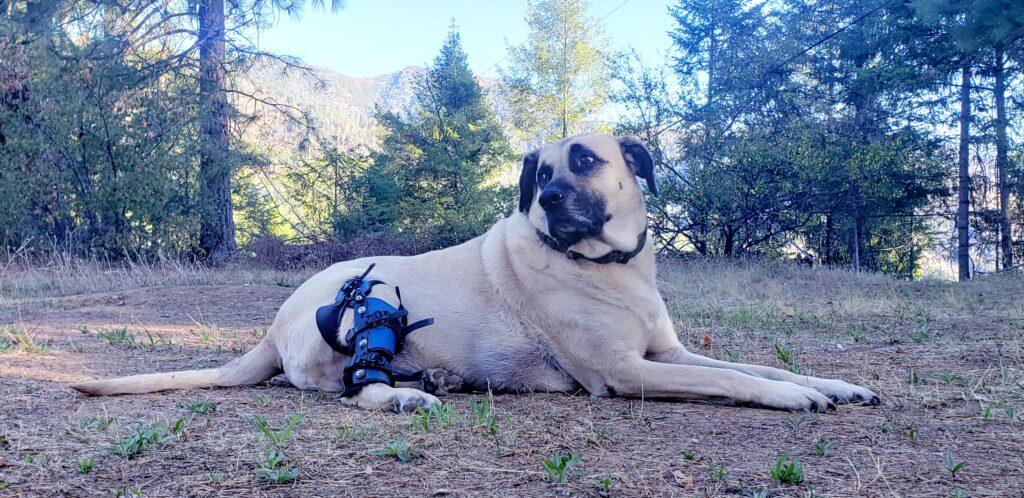
You know, the ones you can find on chewy or amazon, sometimes even online, that advertise amazing results for under $200. Sounds great, right? Well, truthfully these products are not meant for full stability. If your dog has a minor strain or sprain, and just needs to take things easy for a couple of weeks, a lot of people feel they need to get right in there and put a soft brace on their dog. This can actually cause the injury to worsen, cause rubbing sores, and really did not do anything to help your poor dog.
While they may be budget friendly, they really are not in the end. More than 80% of people that purchase these “non refundable” soft braces online end up getting a custom orthotic anyways. Sadly, some of these companies are charging up to $500 for these non-custom products, promising great results. Don’t fall for these, anything that needs a strap or stirrup to go up over the back or connect to a collar or harness is not a custom product, and will not work long term for your dog’s injury.
If your dog only has a small sprain, just let them recover by keeping them quiet and leashed for a few weeks, and they will be just fine, no need to spend your money on soft braces. Unlike with people, a dog knee is just too angled for these to fit properly without the need for straps, and they will not stay up.
You will see a few companies that try to say casted braces are the only way to go custom. Well, that is not necessarily correct. If you are in a local area for one of these places, and are able to go into their manufacturing facilities to have them actually do the cast, then you may be ok, however, in our experience, even veterinarians get casts wrong, and this can be a huge headache. Then, you will need to remake your appointment at the vet’s office, possibly re-sedate your poor dog, and remake the cast again. And if your dog has hair, this can be quite a painful process.
Then, if all of that is finally finished, you now have a hard plastic, not forgiving, brace. How would you like to have hard plastic up against your sensitive areas/groin? Or on the soft tissue of your ankle? And you can imagine that if your dog starts to get back into walks and gains muscle back, now there is a new issue. The brace was made for your dog’s leg circumference at the time of casting, but if your dog looses weight or gains muscle, the brace no longer will fit, and you are looking at a lot of modifications, or most likely the need to completely remake the brace. Not really cost effective anymore, is it?
You can tell that this brace was made with our dog’s comfort and daily activities in mind. There is no need for casting, we do everything through our proprietary computer software, that allows us to make a perfect fitting dog knee brace the first time. Also, our custom dog knee brace will last you for the rest of your dog’s life. It is waterproof, weather proof, easy to care for, comfortable, and actually made with decades of experienced hands.
Not only that, but we do a fitting video call with all of our clients, so you get to have one on one time with our certified veterinary technicians to help with physical therapy, walk schedules, and supplements. No other company offers this, for free, with the brace. I know, right? Posh is one of a kind, as there is no hard plastic touching your poor dog’s sensitive areas. Most people comment that they want us to make them a brace, as it is so well made! The semi-rigid shells provide support for the knee, without taking away the comfort.
So, there you have it! The 3 types of braces for dogs. Let us know if you have any questions!
If you are interested in our braces for dogs please check out out store page or visit our Facebook Page for more information.
Hey guys! This is Nikki, Lead Veterinary technician with Posh Dog Knee Braces, and today I would like to discuss the hard decision of how to pick conservative management, and if that is the path for you. I am going to be attaching an excellent article, written by Dr. Narda Robinson, DVM, from Colorado State University. Note, this article is from 2012, but sadly what she said is still 100% true, and most studies done are still being ignored, even if they show proof that surgery is not always the best option for our beloved furry family members.
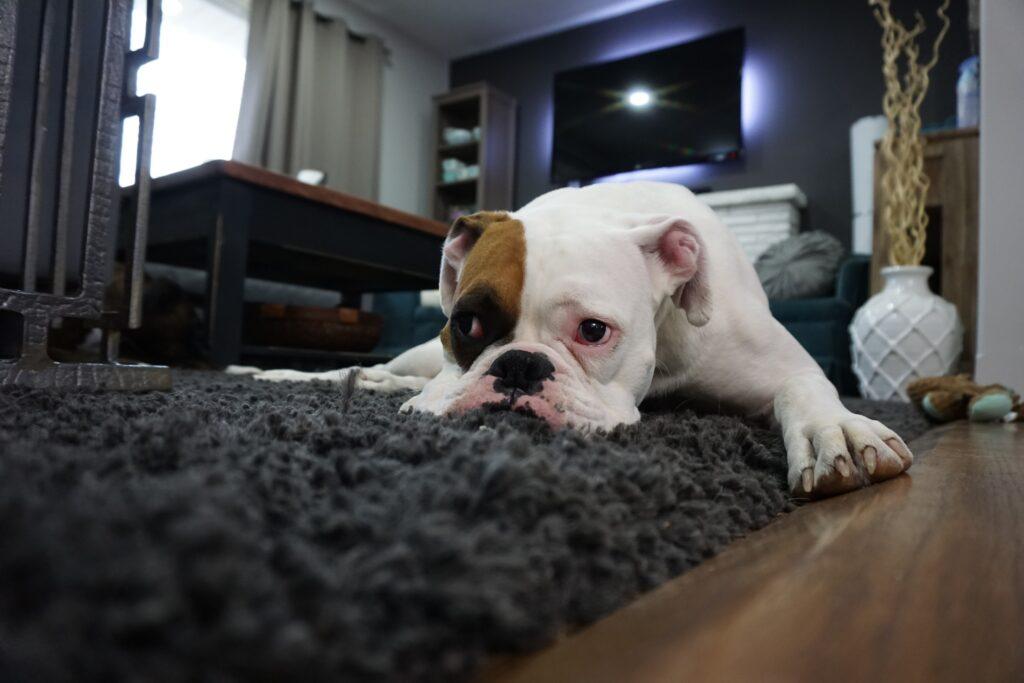
https://www.veterinarypracticenews.com/questioning-canine-cruciate-ligament-surgery/
Here Dr. Robinson goes on to talk about 8 false claims that surgery is best for your dog. Have I mentioned I love her! Her genuine honesty in the Veterinary field is a breath of fresh air. In this article, she uses actual facts and her experience to back up false claims that TPLO is the ONLY option for every dog with a CCL/ACL or meniscus tear.
She also dives into the diversity comparing humans to dog knees, and why the veterinary field is so quick to tell you they are different. Because they know that in human medicine, people choose conservative management, and go on to lead perfectly healthy and active lives ALL the time. They also know, that in no way would a person elect to have their tibia completely severed in pieces, and literally screwed back together to fix a ligament tear.
Just last week, I took my son to a human orthopedic Dr. for a recheck of his arm. We got to talking about our pets, and he told me that his 8 year old Labrador retriever had a CCL tear in the left hind leg. I asked if he was considering the surgery, and he immediately said no. He said there was no way he would put his dog through that expensive surgery right off, without at least giving his dog a few weeks to see if he made any improvements.
We discussed bracing and Conservative Management , and he immediately took my card and said what a great option we had. So, here we have a trained orthopedic surgeon for humans refusing to do surgery on his dog, because he knew from experience that it was not always warranted.
We can always do more with conservative care, such as weight loss, supplements, diet changes, PRP, massage, acupuncture, laser, hydrotherapy, and much more! I always tell people, you have a lot of options initially, and surgery may eventually be warranted, however, you do have some time to explore alternative solutions first. We can always do more Conservative Management, but once you cut the bone, there is no going back from that, especially if your dog is the 1 in 4 that has a lifelong complication.
Please check us out at poshdogkneebrace.com, or you can leave us a message on our contact page if you have any questions about Conservative Management.
~Nikki, Posh Lead Veterinary Technician
The Posh Dog Knee Brace is a 100% custom Dog knee brace, hand made only for your Dog. We make our custom brace with no casting. Our state-of-the-art brace for Dogs is very durable, waterproof, sand proof, and easily adjustable by customers. If you are interesed in purchasing a Posh Dog Knee Brace you can order a brace online or you can contact us with any questions you may have about or dog knee brace.
Hey guys, this is Nikki, Lead Veterinary technician with Posh Dog Knee Braces. So, today I would like to talk about Laser Therapy for Dog’s with knee injuries ACL/CCL, or arthritis, and how it can help! First off, what is Laser therapy? Laser therapy is taking a simple beam of light to penetrate deep into the tissues and produce positive tissue changes. First used on hair regrowth, Laser therapy has been a growing success.
There are 2 types of treatment you will hear. Cold laser, which focuses on the surface of the skin, and blood circulation, while hot laser are for deeper tissues. Hot laser should only be done by medical professionals, as it is used for cutting and burning, as well as healing.
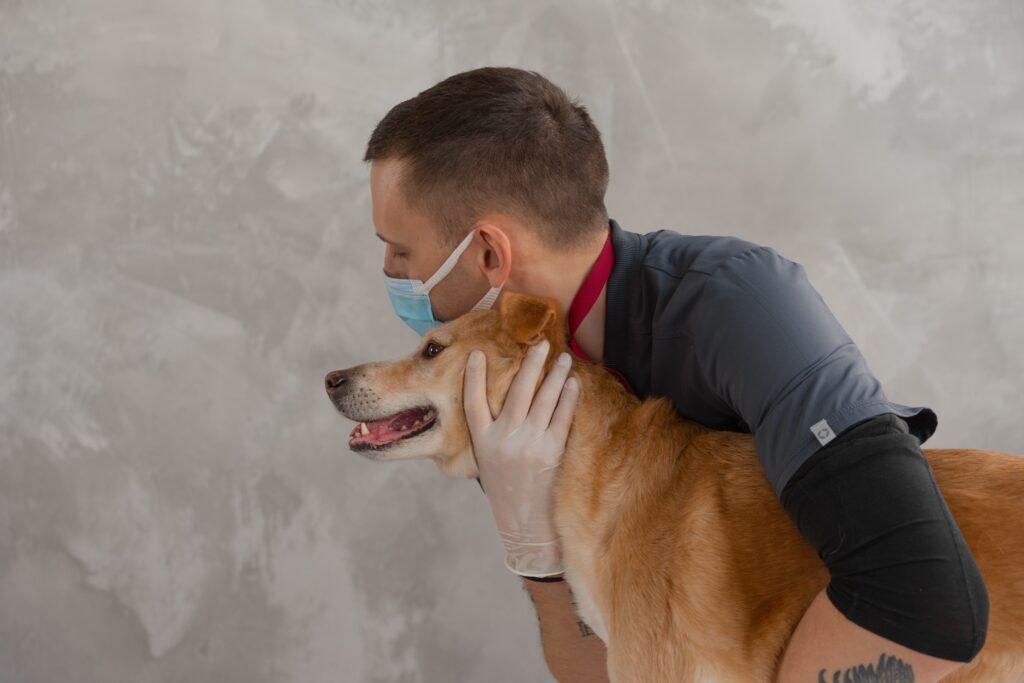
In most practices, we use low-level laser, or class IV laser therapy. Depending on the class of the laser, will tell you if it is something you can do from home or by a clinician. Quality laser equipment is very expensive, thus most will opt for therapy with their holistic vet, chiropractor, or veterinarian.
So, how do dogs react to having laser therapy done? They find it very relaxing. Laser therapy releases endorphins, so dogs usually find it relaxing and positive. Another benefit, is that your dog will not need to be sedated for laser, they can be resting and wide awake. There is no need to clip the hair away either, like other treatments. There is usually no side effects, the type of lasers used should not cause any burns to the skin.
So how will this help a dog with a ccl tear? Cold laser therapy for dogs with cruciate ligament injuries, restore health to damaged tissue cells by stimulating their ability to grow and survive, and heal naturally. It helps relieve pain and limping as well. If used with conjunction with an orthotic (brace) this would give your pup a good chance of fully recovering with less pain.
Please call or email with any questions! Poshintake1@gmail.com, or 509-412-3065. You can also leave us a message on our contact form or visit our Facebook page.
Thanks!
Read reviews check out our Google Reviews online. Click Here